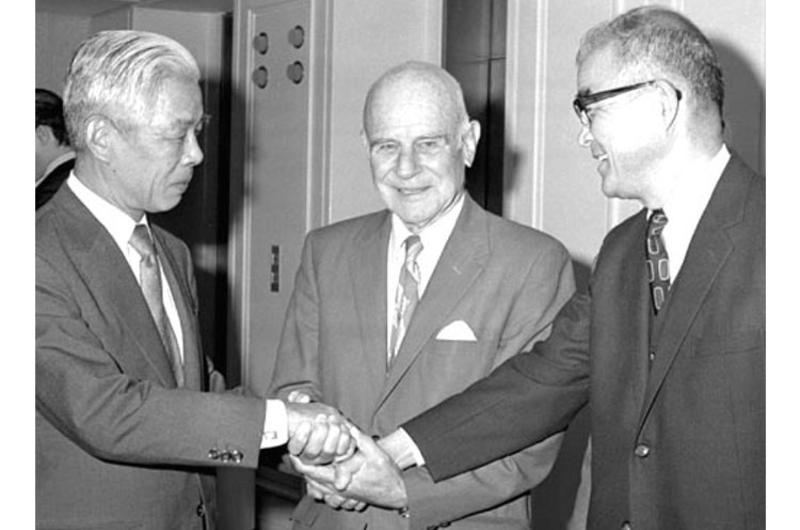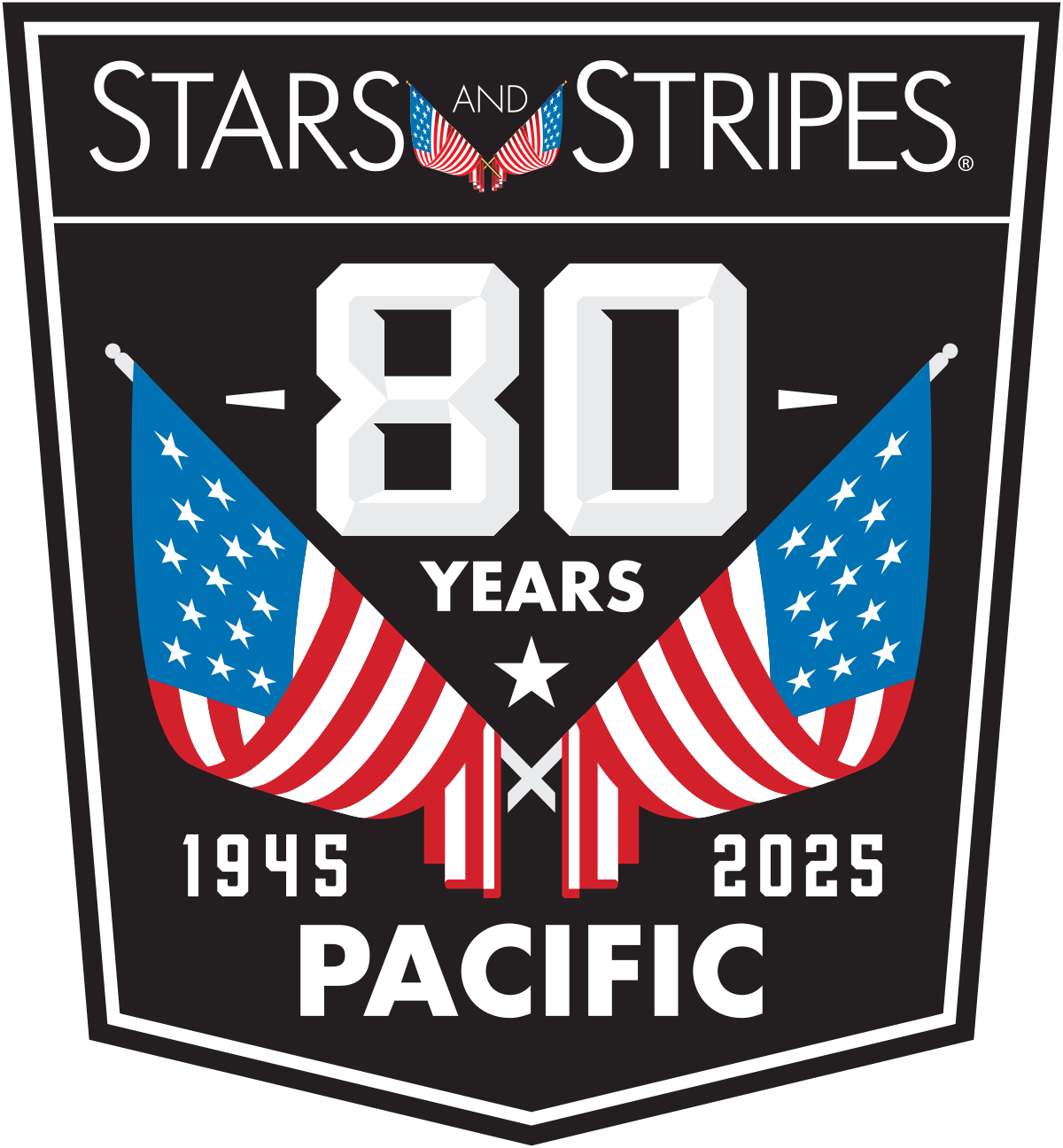Jimmy Doolittle, ex-foes recall the Tokyo raid

Retired Lt. Gen James H. "Jimmy" Doolittle, center, clasps hands with retired Japanese Rear Admirals Heijiro Abe, left, and Sadao Chigusa at the American Club in Tokyo in March, 1974.
By Hal Drake | Stars and Stripes March 24, 1974
TOKYO — To hear Jimmy Doolittle tell it, his fabled raid on Tokyo was as much quixotic as heroic, a pinprick thrust in which only slight damage was inflicted on the enemy and the real target could not even be seen.
Returning to Japan for his eighth visit — including his flashing glimpse of the Japanese capital on April 18, 1942 — the retired Air Force lieutenant general reached back almost 32 years to describe the raid and explain its real purposes which have been lost or obscured in legend.
To begin with, Doolittle said, it was not his 16 twin-engine bombers, flown from the deck of an aircraft carrier, that humbled and devastated Japan — the gigantic B29 bombers of the 26th Air Force, flying in the contrails of the first raiders later in the war, did that.
He said his handful of aircraft, which struck Tokyo and other Japanese cities only a few months after the Pearl Harbor raid thrust America into the Pacific War, could not hope to accomplish much.
"What happened was that the Japanese attack was a very successful operation," Doolittle told members and guests of the American Club at a luncheon in his honor Friday. "My operation was more of a morale thing. We couldn't hope to do much except give good news to the people back home and some bad news to the Japanese."
Did he succeed? Doolittle, now 77 and an executive for Mutual of Omaha and affiliated insurance firms, listened attentively as a former enemy, whom he met and greeted as a friend, told of the raid's impact on Japanese psychology and morale.
Recalling that his destroyer escorted the Japanese carriers which launched aircraft for a successful, almost costless strike on Hawaii, former Adm. Sadao Chigusa said, "I asked myself then, what is war?"
A few months later, as the same strike force was in the Indian Ocean on the edge of a successful battle in which a British carrier and cruiser were sunk, "Doolittle stuck a pin into our brains. I told myself, this is war."
Doolittle clasped hands not only with Chigusa, but Kiyokuma Okajima and Heijiro Abe, who also held admiral rank in the postwar Maritime Self-Defense Force after serving as junior officers in the World War II Imperial Navy. Also at Doolittle's side at a long table was Jacob DeShazer, a Methodist missionary who as a young gunner-bombardier took off with Doolittle's force for a one-plane raid on Nagoya.
Bailing out over China, DeShazer was captured by the Japanese, sentenced to death and reprieved to spend more than three years in a Nanking prison. He decided at that time, DeShazer said, to become a missionary and return to Japan after the war.
Doolittle told of how the raiders took off 800 miles from Tokyo, some 400 miles from their originally-planned launching point, after two small Japanese patrol craft saw them. Heading for Tokyo, Nagoya, Osaka and Kobe, each pilot dead-reckoned his way to a carefully selected target, carrying 1,000 pounds of bombs. One could not find his objective and jettisoned his bombs into the ocean. The others inflicted minimal damage and maximum shock, Doolittle related. His own target, he said, was a munitions dump "in the manufacturing district of Tokyo," and the blotch of fire and smoke only slightly marred the sprawling vastness of the city.
"On a map of Tokyo in 1942," he said, "I could probably pinpoint the place and find it again. In the Tokyo of today, I could not."
Fifteen of the bombers, Doolittle said, went on to China, where two went into the coastal waters, one landed by a lake in the interior and others ran out of gas and were ditched by their crews. One pilot, against orders, flew to Vladivostok, where the Soviets, neutrals in the Pacific War, seized the bomber and interned the crew.
Sharp, alert and quick of movement and answer despite his years, Doolittle turned often to a wall-sized window in the small banquet room, glancing out at a tangle of buildings and freeways.
He recalled that Tokyo was a seared, bomb-pitted wilderness in 1945 and that he thought "it would be a very, very long time before Japan recovered.
"I want to take this occasion," Doolittle said, "to congratulate the Japanese people on their magnificent recovery. This was accomplished through good organization, good planning and plain hard work. I am very pleased now that Japan and America are close allies working together for peace and for a better world."
Doolittle planned to leave Saturday for Okinawa and will also visit Taiwan before returning home. Next month, he said, he and the other 52 survivors of tile original 80-man raiding force will gather for a reunion in Oakland, Calif.
Abe came to Doolittle with a faded souvenir — a brownish snapshot Abe took from the cockpit of a bomber over Ford Island on Dec. 7, 1941. He carefully pointed out the blazing Arizona and West Virginia.
"Yes," Doolittle said, smiling, "I recognize the area."



